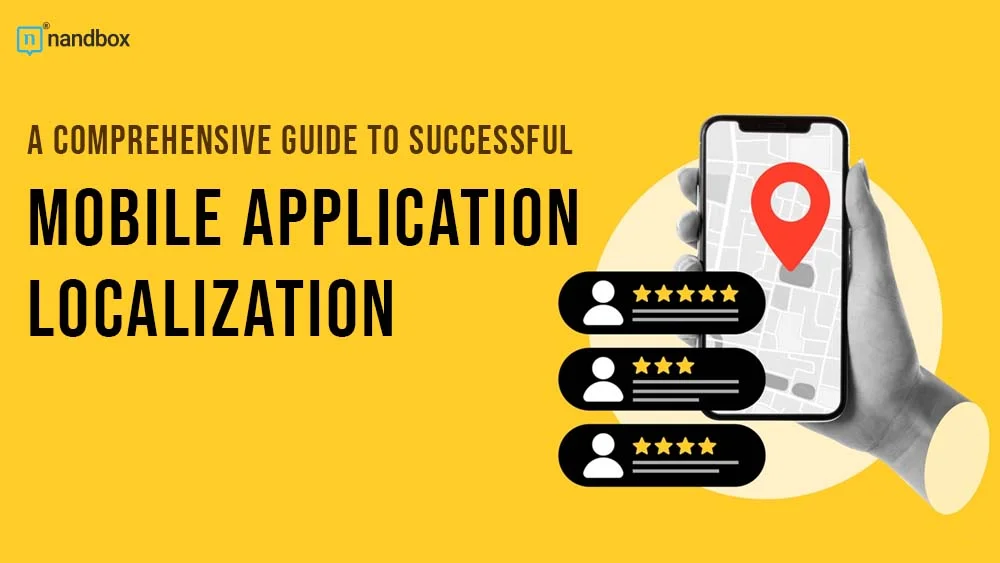An Essential Guide to Effective Mobile Application Localization
After launching your mobile app, you find it’s popular not just in your country but around the world. This is exciting, but there’s a problem: the app was only made for users in your home country and might not work well for people in other places. To fix this, you need to localize your app. This means making changes so it fits the needs and cultures of users in different countries. Want to learn more about mobile application localization? Read on for the fine details.
What Is Mobile App Localization?
Mobile app localization involves tailoring a mobile application to suit the linguistic, cultural, and technical needs of diverse target markets around the globe. This process extends well beyond the simple translation of app content. It includes adjusting elements like:
- Language and Text: Content translation into the local languages and adapting the text to fit cultural nuances
- Cultural Adaptations: Modifying content, images, icons, and colors to align with local customs and values
- Functional Adjustments: Adapting to local regulations, measurement units, date formats, and currency
- Technical Requirements: Ensuring compatibility with local networks, devices, and operating systems
- Marketing and Legal Aspects: Aligning the marketing strategies with local market trends and ensuring compliance with local legal requirements
The goal of an app localization strategy is to provide a user experience that feels unique, natural, and intuitive to users in different regions, increasing the app’s accessibility, relevance, and success in international markets. Mobile application localization services help businesses attain this goal.
Benefits of Mobile App Localization
According to 2023 research from Statista, the global count of smartphone mobile network subscriptions hit nearly 6.4 billion in 2022 and is expected to surpass 7.7 billion by 2028. Now, this statistical data already implies tons of business opportunities. Localizing your mobile app can bring several significant benefits, including:
Expanded Market Reach
By adapting your app for different languages and cultures, you can penetrate new markets and attract more users who might otherwise overlook an app that doesn’t cater to their local needs. This is the first step to successful localization management.
Enhanced User Experience
Localization ensures that the app meets the cultural and linguistic expectations of its users, making it more intuitive and enjoyable to use. This leads to higher user satisfaction and customer retention.
Increased Revenue
With a broader audience, you can generate more downloads and in-app purchases. Localized apps often see a significant increase in revenue because they appeal directly to a wider range of users.
Competitive Advantage
Localizing your app can give you an edge over competitors who may not have tailored their apps to specific markets. Being the first to offer a localized version in a particular region can establish your brand as thoughtful and user-focused.
Improved App Ratings and Reviews
Users are more likely to rate an app highly and recommend it to others if it meets their linguistic and cultural preferences. Positive ratings and reviews can further boost visibility and downloads.
Compliance with Local Regulations
Different countries may have specific legal requirements regarding data privacy, content, and user interaction. Localization ensures compliance, reducing the risk of legal issues and potential fines.
Overall, localizing your app can significantly improve its overall appeal and effectiveness, ultimately contributing to its global success.
How to Perform Mobile Application Localization
Here’s a comprehensive step-by-step guide on effective mobile app localization process:
Step 1: Planning and Analysis
Identify and prioritize target markets based on potential user base and revenue opportunities. Analyze local user preferences, market trends, and the competitive landscape. Evaluate cultural nuances, traditions, and expectations that may influence app design and functionality. Consider local holidays, language idioms, and any regional censorship laws.
Step 2: Internationalization
Implement an architecture that supports multiple languages and locales. Use Unicode for global character support and ensure that your app’s layout is flexible to accommodate variations in text length and direction. Externalize all localizable content, such as strings and multimedia assets. This setup simplifies the localization process by separating content from code.
Step 3: Localization
Translate the app’s textual content into the target languages, focusing on both accuracy and cultural appropriateness. Avoid literal translations; instead, aim for translations that maintain the context and tone of the content.
Moreover, adjust graphical elements, colors, and user interface to meet local tastes and cultural practices. This may include modifying layout and design elements to suit local reading patterns and preferences. Ensure the app complies with local regulations, including privacy laws, data storage, and age restrictions.
Step 4: Testing and Quality Assurance
Validate the linguistic accuracy and relevance of translations in the app’s context. Check for natural language use and cultural appropriateness. Test the app in all targeted locales to ensure functionalities like date, time, currency formats, and third-party services integration work correctly. Conduct user testing with native speakers to ensure the app is intuitive and user-friendly in each locale.
Step 5: Launch and Monitoring
Initially release the app in a limited market to gauge user response and identify any critical issues before a full launch. Implement mechanisms to gather user feedback effectively. Monitor how users interact with the localized versions of your app. Refine and optimize the application based on user feedback and performance metrics.
Step 6: Post-Launch Updates
Regularly update the application to address user feedback, add new features, fix bugs, and improve localization elements. Develop localized marketing strategies and promotional materials. Optimize app store listings with local keywords and culturally relevant content.
Step 7: Utilization of Professional Services
Engage with professional translators and localization experts who are familiar with the technological and cultural context of each target market. Leverage specialized tools and platforms that facilitate efficient management of localization projects and ensure consistency across different language versions.
Following these steps helps ensure a smooth and successful localization process, enabling your app to resonate well with global audiences and succeed in diverse markets.
Conclusion
Localizing your mobile app is about ensuring it fits seamlessly into the daily life of your target market, considering their language, culture, and regional preferences. Collaborate with native speakers for translations and to get insights into the cultural context. Don’t forget to look into local regulations and tailor technical features, like payment methods, to meet regional needs. Most importantly, test your app with local users to smooth out any rough areas and ensure it really clicks with them, boosting your app’s potential worldwide.





